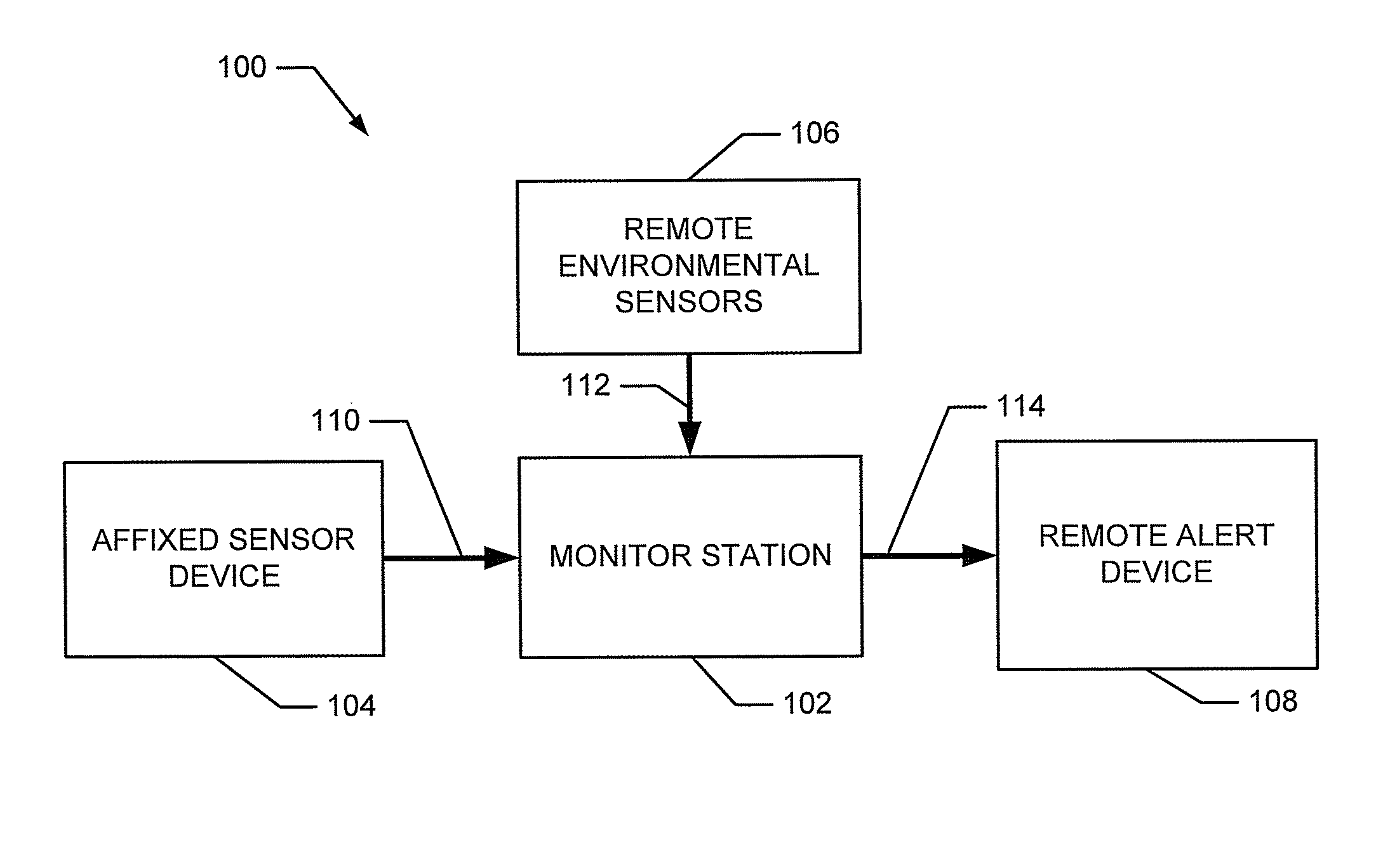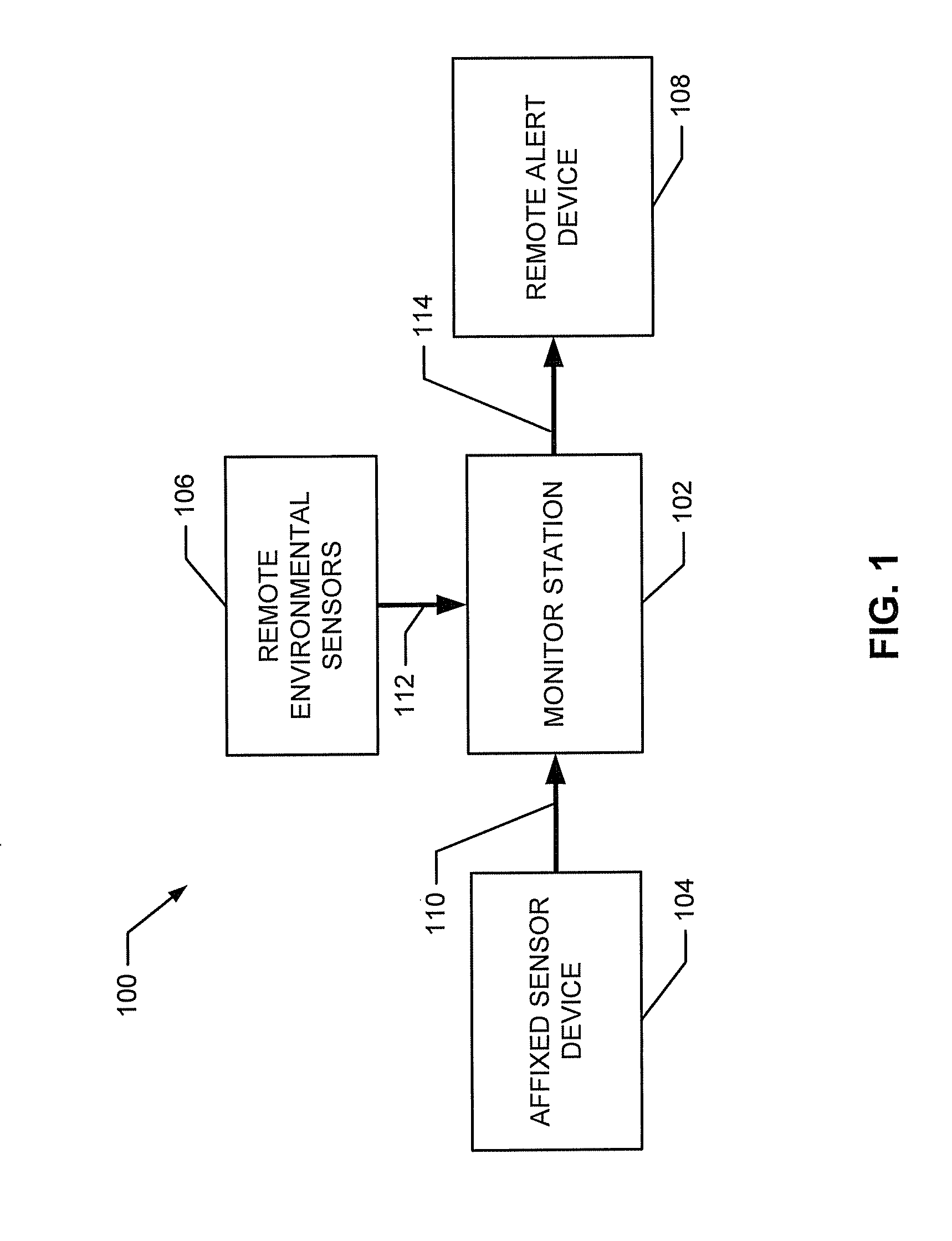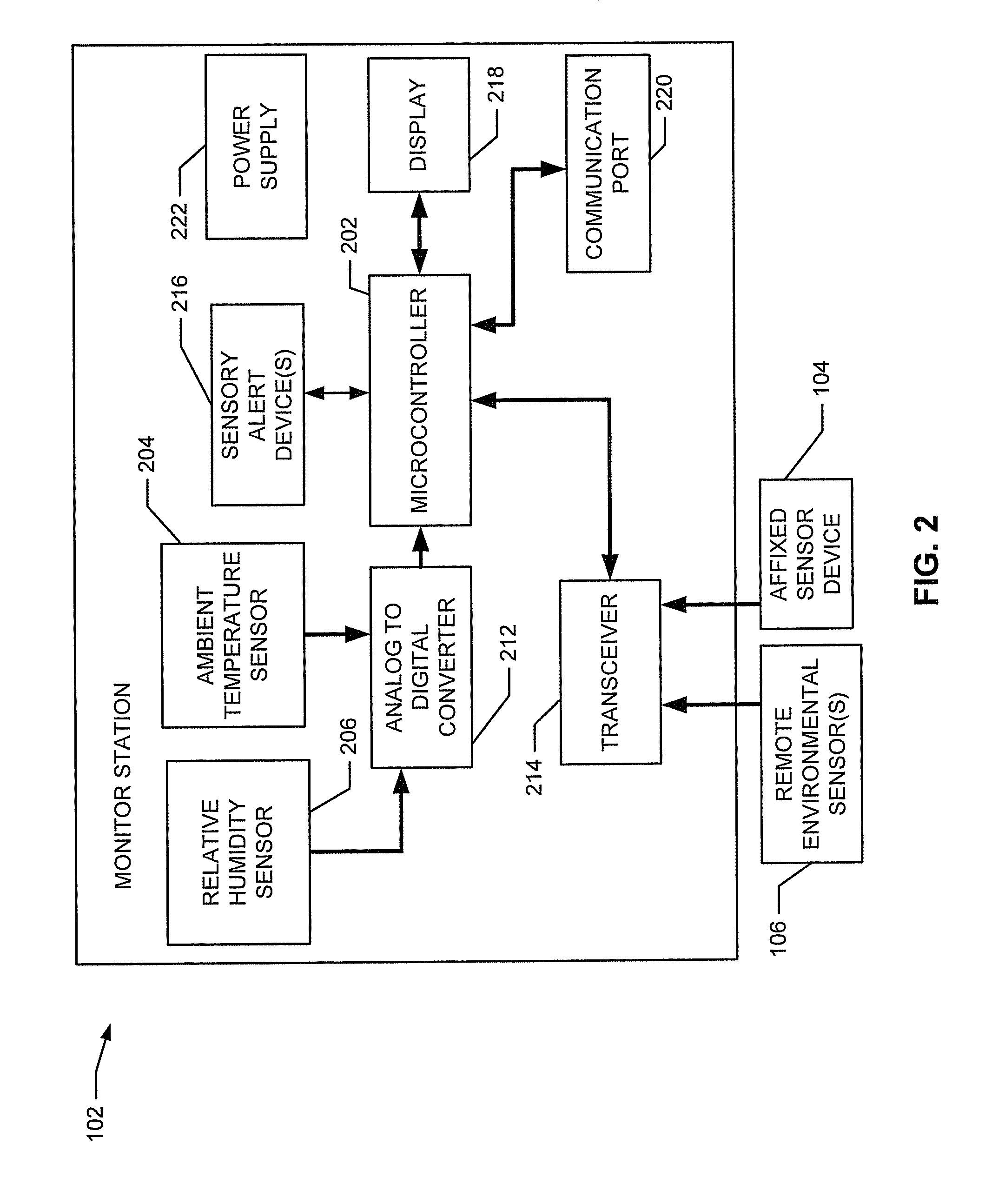Multi-sensor environmental and physiological monitor system and methods of use
a monitor system and multi-sensor technology, applied in the field of multi-sensor environmental and physiological monitor system and methods of use, can solve the problems hyperthermia or heat stroke is an ongoing threat to animals and children, and the effect of reducing the effectiveness of body temperature regulation
- Summary
- Abstract
- Description
- Claims
- Application Information
AI Technical Summary
Benefits of technology
Problems solved by technology
Method used
Image
Examples
example 1
Wireless Communications Testing
[0107]To demonstrate the feasibility of wireless communication between remote environmental sensors and a monitor station, the following experiments were conducted.
[0108]Two breadboard circuits were developed that included identical circuit schematics: PIC18F4550 microcontroller (Microchip Technology Inc., Chandler, Ariz., USA), a TI CC1101 wireless module (Texas Instruments Inc., Dallas, Tex., USA), and a set of eight red LEDs. The LEDs served as a visual display of the register values being transmitted and received by both circuits, and to facilitate troubleshooting of the circuits. The microcontroller and wireless module were similar to the microcontrollers and wireless modules selected for inclusion in the components of a prototype monitor system.
[0109]The microcontroller of the first breadboard circuit was loaded with a program that would configure that circuit's wireless module in transmitter mode. The microcontroller of the second breadboard cir...
example 2
Skin Surface Temperature Testing
[0112]To assess the feasibility of measuring the skin temperature of a canine, the following experiment was conducted.
[0113]A prototype circuit that included a thermistor (HSTH-44304, Omega, Inc.) in an unbalanced Wheatstone bridge circuit and a PIC18F4550 microcontroller Microchip Technology Inc., Chandler, Ariz., USA) was used to test the skin temperature of three canine subjects at several locations: the ventral neck, the dorsal neck, and axillary. For comparison, a core temperature was obtained by measuring the rectal temperature of all canine subjects. In addition, similar temperature measurements were made from one of the canine subjects while exercising.
[0114]The temperature measurements obtained for the canine subjects are summarized in Table 1 below. For all dogs at rest, the skin temperate varied depending on the location at which the temperature measurement was obtained. Typically, the ventral neck skin temperature was lowest, the axillary ...
PUM
 Login to View More
Login to View More Abstract
Description
Claims
Application Information
 Login to View More
Login to View More - R&D
- Intellectual Property
- Life Sciences
- Materials
- Tech Scout
- Unparalleled Data Quality
- Higher Quality Content
- 60% Fewer Hallucinations
Browse by: Latest US Patents, China's latest patents, Technical Efficacy Thesaurus, Application Domain, Technology Topic, Popular Technical Reports.
© 2025 PatSnap. All rights reserved.Legal|Privacy policy|Modern Slavery Act Transparency Statement|Sitemap|About US| Contact US: help@patsnap.com



